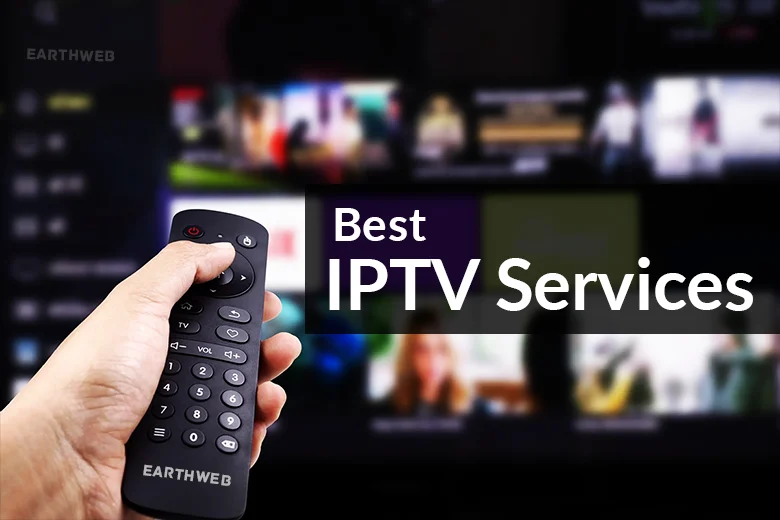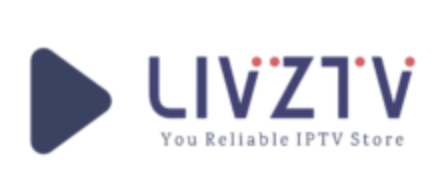How to Set Up IPTV Providers: A Simple Guide for Cable Cutters (2025)
Table of Contents

Are IPTV providers the solution to your skyrocketing cable bills? With traditional cable packages costing American households an average of $217 per month, millions are searching for affordable alternatives that don’t sacrifice content quality.
Streaming television over internet protocol has revolutionized how we consume media. IPTV Providers USA services now offer thousands of channels, on-demand content, and catch-up features at a fraction of cable’s cost. Furthermore, these services deliver greater flexibility, allowing you to watch your favorite programs across multiple devices without rental equipment fees.
Despite these advantages, many potential cord-cutters feel overwhelmed when considering the switch. Questions about legality, technical requirements, and finding reliable providers often prevent people from taking the plunge.
This comprehensive guide will walk you through everything you need to know about setting up IPTV Providers services in 2025. From understanding how IPTV works to choosing trustworthy providers and configuring various devices, we’ve simplified the process to help you cut the cord with confidence.
Ready to free yourself from expensive cable contracts while expanding your entertainment options? Let’s get started.

What is IPTV Providers and Why It’s Replacing Cable
IPTV (Internet Protocol Television) represents a fundamental shift in how television content is delivered to viewers. Unlike traditional broadcasting methods that use radio frequency transmissions, IPTV sends television signals through internet protocols—the same technology that powers your everyday web browsing.
How IPTV works over the internet
At its core, IPTV providers deliver content through packet-switched networks rather than through conventional broadcast media. This technology breaks video content into data packets that travel across the internet to your device. Once received, these packets reassemble into the original content, allowing you to watch your favorite shows without interruption.
The process involves three main components:
- Video servers that store and manage content
- Content delivery networks that efficiently distribute data
- End-user applications that decode and display the content
This packet-based delivery system offers significant advantages over traditional broadcasting methods. Most notably, it enables two-way communication between viewers and service providers, allowing for interactive features that simply aren’t possible with one-way broadcast systems.
Benefits over traditional cable and satellite
The migration from traditional cable to IPTV Providers services continues to accelerate for several compelling reasons:
- Cost-effectiveness: IPTV Providers services typically cost between $10-25 per month compared to cable’s $85-217 monthly fees, representing savings of up to 90%.
- Device flexibility: Unlike cable that ties you to a TV with a physical box, IPTV allows viewing across smartphones, tablets, computers, and smart TVs simultaneously—often on multiple devices with a single subscription.
- No geographical limitations: Traditional cable and satellite services require physical infrastructure or line-of-sight to satellites. Conversely, IPTV Providers needs only an internet connection, making it accessible virtually anywhere.
- Content personalization: Many IPTV providers offer customizable channel packages rather than forcing customers to purchase bundles containing unwanted channels.
- No additional equipment costs: Most IPTV Providers services eliminate the need for rental equipment fees that typically add $5-15 monthly to traditional cable bills.
Types of IPTV: Live TV, VOD, Catch-up
IPTV Providers services generally fall into three main categories, each serving different viewing preferences:
Live TV mirrors traditional broadcasting by streaming content in real-time. This format remains essential for sports events, news broadcasts, and special live programs. The technology behind live IPTV utilizes multicasting—a method where a single data stream serves multiple viewers simultaneously, reducing bandwidth requirements.
Video on Demand (VOD) provides a library of content available at any time. Unlike scheduled programming, VOD lets viewers start, pause, and resume content whenever convenient. This format resembles services like Netflix but often includes more recent releases and specialized content. VOD systems typically store content on servers, delivering it individually to each user upon request.
Catch-up TV bridges the gap between live broadcasts and on-demand viewing. This service allows users to watch recently aired programs they might have missed, typically for a limited time after the original broadcast. For instance, if you missed last night’s episode of your favorite show, catch-up services let you view it for several days afterward without needing to record it yourself.
Many premium IPTV providers now offer hybrid solutions combining all three types, allowing subscribers to seamlessly switch between watching live sports events, catching up on yesterday’s news, or browsing through on-demand movies. Additionally, the integration of electronic program guides (EPGs) gives users intuitive interfaces that make navigating thousands of content options surprisingly simple.
As internet speeds continue improving nationwide, IPTV’s advantages over traditional television delivery methods become increasingly apparent, explaining why millions of households continue cutting the cord each year.

What You Need Before Setting Up Providers IPTV
Before diving into the world of IPTV services, ensuring you have the right technical foundation is essential for a smooth streaming experience. Let’s examine the four key prerequisites for setting up a reliable IPTV system. iptv Providers
High-speed internet requirements
A robust internet connection serves as the backbone of any IPTV setup. Consequently, you’ll need sufficient bandwidth to avoid frustrating buffering issues during your viewing sessions.
For standard IPTV streaming, experts recommend a minimum internet speed of 25-35 Mbps . This baseline ensures you can watch content without interruptions. However, the requirements increase significantly based on your preferred streaming quality:
- SD quality: 25 Mbps minimum
- HD quality: 30 Mbps recommended
- Ultra HD/1080p: 50 Mbps recommended
- 4K content: 100 Mbps or higher
Remember that these speeds assume no other devices are simultaneously using your network. During peak traffic hours (typically evenings), you might experience slower connections due to network congestion 2. Therefore, consider scheduling your IPTV viewing during off-peak hours or upgrading to a faster internet plan if multiple household members stream content simultaneously.
Compatible devices (Firestick, Android, Smart TVs)
One of IPTV’s primary advantages is its versatility across numerous devices. The most popular options include:
- Amazon Fire TV Stick: Particularly the 4K Max model, which offers affordability, portability, and robust performance with a powerful quad-core processor for lag-free streaming
- Nvidia Shield TV Pro: A premium option designed for power users with unmatched processing capabilities 3
- MAG boxes: Dedicated IPTV devices known for simplicity and reliability
- Apple TV 4K: Combines sleek design with powerful streaming features
- Android TV devices: Budget-friendly options like Xiaomi Mi Box S and Chromecast with Google TV
When selecting a device, consider your streaming quality requirements. For 4K or UHD content, opt for premium devices like Nvidia Shield TV Pro or Fire TV Stick 4K Max . For standard HD streams, MAG boxes or basic Android TV boxes are typically sufficient.
Choosing a reliable IPTV player
An IPTV player functions as the interface between your subscription and viewing experience. Quality players offer several crucial features:
- User-friendly interface
- M3U playlist support
- Xtream Codes API login capability
- Electronic Program Guide (EPG) integration
- Favorites management
- Recording functionality
- VOD capabilities
- Multi-screen support
Currently, IPTV Smarters Pro stands as one of the most versatile options, available on nearly any device including Firestick, Android/Google TV boxes, iOS devices, Windows PC, and Android phones/tablets . It allows login from multiple IPTV subscriptions, essentially creating a single hub for all your services .
Importance of using a VPN
Employing a Virtual Private Network (VPN) while using IPTV services provides several critical benefits:
- Enhanced privacy: A VPN encrypts your online data through a secure tunnel, preventing your Internet Service Provider from monitoring your viewing activities
- Improved security: The encryption protects against potential hackers who might attempt to spy on your network iptv Providers
- Better streaming speeds: ISPs sometimes throttle bandwidth for data-intensive activities like IPTV streaming. A VPN helps bypass these artificial restrictions
- IP address protection: By masking your actual IP address, a VPN adds an extra privacy layer and allows you to connect with your local IPTV providers securely while traveling
Besides these technical benefits, a VPN also helps bypass geographic restrictions, allowing access to region-specific content regardless of your physical location.
How to Choose the Right IPTV Provider
Selecting the right IPTV provider remains crucial for a reliable streaming experience. With numerous options available, understanding key differences helps you make an informed decision that aligns with your viewing needs.
Verified vs unverified services
IPTV Providers services fall into two distinct categories. Verified providers operate with proper licensing and distribution rights for their content. Examples include YouTube TV, Hulu, and DirecTV Stream, which you’ll typically find in official app stores like Google Play and Apple Store .
Unverified services, meanwhile, exist in a legal gray area. These third-party providers often lack proper content distribution rights and aren’t available on official app stores . While they typically offer more channels at lower prices (USD 5-20 monthly compared to verified services’ higher costs), they come with significant risks .
What to look for in a provider
When evaluating potential IPTV providers , consider these essential factors:
- Content variety: Check the number and quality of live TV channels, sports offerings, and video-on-demand availability
- Connection stability: Look for services with minimal buffering and high uptime percentages
- Device compatibility: Ensure the service works with your preferred streaming devices
- EPG support: Electronic Program Guide makes navigation much simpler
- Customer support: Responsive support becomes vital during technical issues
Be wary of red flags such as unrealistic promises, poor communication channels, suspicious payment requirements, or providers that suddenly appear without established reputation .
Free trials and pricing models
Most reputable IPTV Providers services offer some type of trial option—this represents your best opportunity to evaluate performance before committing . Trial periods typically range from 24-48 hours for unverified services to 7 days for verified options .
Pricing structures generally include:
- Monthly subscriptions: Offering flexibility to cancel or change plans
- Annual plans: Providing 20-40% savings compared to monthly billing
- Multi-connection packages: Allowing simultaneous streams on multiple devices, typically costing 30-50% more than single-connection plans
Always start with a short-term commitment until you’ve verified reliability and quality.
Payment methods and privacy
For unverified IPTV services, prioritize privacy when making payments. Consider creating an anonymous email specifically for your subscription . Payment options often include credit cards, PayPal, and sometimes cryptocurrencies .
For maximum security with unverified services:
- Use pre-paid credit cards or masked card services like Abine Blur
- Start with one-month subscriptions rather than annual commitments
- Employ a VPN to protect your identity while streaming
- Read the provider’s privacy policy carefully
Verified services generally offer more transparent billing practices and don’t require these additional privacy measures 8.
Step-by-Step: Setting Up IPTV on Popular Devices
Once you’ve selected your IPTV provider, setting up the service on your devices is straightforward with the right approach. Let’s explore installation methods for the most popular streaming platforms.
Installing IPTV on Firestick
Firestick installation typically requires sideloading since most IPTV Providers apps aren’t available in the Amazon App Store. Initially, enable sideloading:
- Navigate to Settings > My Fire TV > Developer Options
- Enable “Apps from Unknown Sources” or “Install Unknown Apps”
- Install the Downloader app from Amazon App Store
- Launch Downloader and enter code 250931 for TROYPOINT Toolbox
- Find IPTV Smarters Pro in the toolbox and select Download
- After installation completes, click Done and delete the APK file
Upon launching, select “TV” layout, choose “Login with Xtream Codes API” or “Load Your Playlist,” and enter your provider credentials.
Using IPTV on Android and iOS
For Android devices, you have two options:
- Download IPTV Smarters Pro from Google Play Store (recommended)
- For fuller functionality, install the APK directly using TROYPOINT Toolbox
iOS users can install Smarters Player Lite from the Apple App Store. Subsequently, open the app and input your login credentials provided by your IPTV service.
Setting up IPTV on Smart TVs
On Samsung Smart TVs:
- Access Smart Hub and search for “IPTV Smarters Pro”
- Download and install the application
- Launch the app and select “Login with Xtream Codes API”
- Enter your username, password, and portal URL
For TVs without native support, use external devices like Firestick or Android TV boxes.
Using M3U URLs and EPG guides
M3U playlists contain channel information while EPG provides program schedules. To set these up:
- Obtain the M3U URL from your IPTV provider
- In your IPTV app, locate the playlist/EPG settings
- Enter the M3U URL in the designated field
- For EPG, add your provider’s EPG URL separately if required
- iptv Providers
Overall, regardless of your device preference, most quality IPTV players offer similar functionality across platforms, allowing you to enjoy your content without technical complications.
Staying Safe and Legal While Streaming IPTV Providers
Navigating the legal landscape of IPTV requires understanding both the technology and its implementation. While you enjoy the benefits of cutting the cord, ensuring you stay on the right side of the law remains equally important.
Understanding IPTV legality
IPTV technology itself is perfectly legal . The distinction lies in how providers obtain and distribute their content. Legitimate services like YouTube TV, Hulu, and DirecTV Stream secure proper licensing agreements with content creators . In contrast, unverified services operating without appropriate licensing exist in a legal gray area .
Legal frameworks vary globally. The UK’s Digital Economy Act of 2017 and the US Protecting Lawful Streaming Act both impose severe penalties for copyright infringement, with potential consequences including fines or even imprisonment .
How a VPN protects your identity
A Virtual Private Network (VPN) offers crucial protection when streaming content:
- Enhanced privacy: VPNs encrypt your internet connection, preventing your ISP from monitoring your viewing activities
- Security against hackers: Encryption protects against potential network spying
- IP address masking: Your online identity appears with the VPN server’s IP address rather than your own
Although free VPN options exist, these often compromise your security by selling data or delivering unstable connections . For maximum protection, invest in a premium VPN with a strict no-logs policy and high-speed servers .
Avoiding scams and fake providers
Fraudulent IPTV services utilize several tactics to appear legitimate:
- Unrealistically low pricing (full access for under $60 annually)
- Claims of thousands of premium channels
- Aggressive sales tactics creating false urgency
- Requests for cryptocurrency or wire transfers
- Lack of transparent contact information
To protect yourself, verify the provider’s reputation through independent reviews, use credit cards for payment protection, and maintain detailed records of all communications . Additionally, keep all devices updated with security patches and avoid installing applications from unknown sources .
Above all, remember that legitimate services operate transparently, with clear terms of service and proper licensing agreements iptv Providers
Conclusion
IPTV Providers services have transformed television consumption, offering substantial benefits over traditional cable subscriptions. The technology delivers impressive cost savings—cutting monthly expenses by up to 90% compared to conventional packages. Additionally, IPTV provides unmatched flexibility, allowing viewers to enjoy content across multiple devices without geographical limitations or equipment rental fees.
Setting up your IPTV Providers service requires several key components. First, ensure your internet connection meets the minimum speed requirements for your desired streaming quality. Second, select compatible devices that match your viewing preferences. Third, choose a reliable IPTV player with user-friendly features. Lastly, protect your online activities with a reputable VPN service.
Choosing the right provider remains crucial for a satisfying experience. Legitimate services offer reasonable trial periods, transparent pricing, and responsive customer support. Remember to verify provider reputation through independent reviews before committing to any subscription plan.
The technical setup process varies slightly between devices but generally follows similar principles across platforms. Whether you prefer Firestick, Android devices, iOS, or Smart TVs, most quality IPTV applications offer comparable functionality for accessing your content.
Safety and legality should never be overlooked when streaming. Though IPTV Providers technology itself is perfectly legal, the distinction lies in content licensing. Verified services operate with proper distribution rights, while unverified options exist in legal gray areas. Therefore, understanding these differences helps protect yourself from potential legal issues and scams.
IPTV Providers represents the future of television consumption—combining affordability, flexibility, and content variety in ways traditional cable simply cannot match. Armed with this guide, you can confidently cut the cord, save money, and enjoy expanded entertainment options on your terms.
iptv Providers

